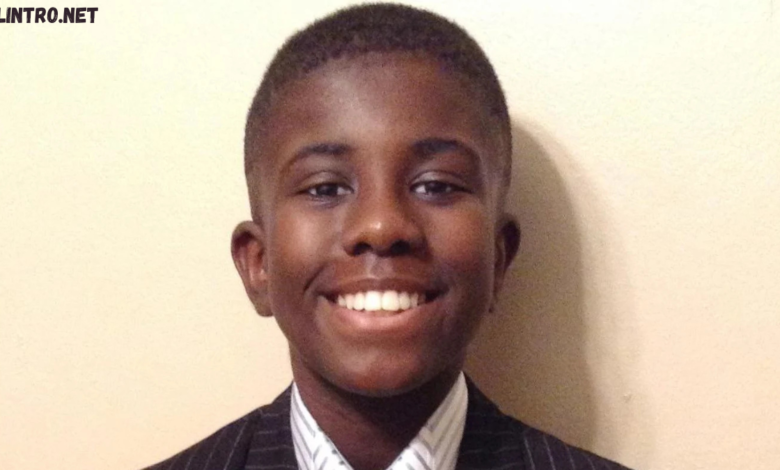The Mysterious Disappearance of Charlie Bothuell A Case That Shocked America

Introduction
In the summer of 2014, the United States was gripped by a Charlie Bothuell and emotionally charged case—the disappearance of 12-year-old Charlie Bothuell. The story captured national headlines and fascinated millions due to its strange twists and unsettling revelations. What started as a standard missing child report quickly spiraled into a tale of hidden abuse, media spectacle, and legal drama. The discovery of young Charlie in his own home after more than a week of frantic searching left the nation both relieved and horrified.
This case stood out not only because of its bizarre nature but also because it exposed alarming truths about child abuse and the effectiveness of child protective systems. With wide media coverage and intense public scrutiny, the Charlie Bothuell case became a defining example of how hidden abuse can unfold in plain sight. This article delves deep into the timeline of events, investigation details, and lasting societal impact of the Charlie Bothuell disappearance, helping readers understand why it remains one of America’s most memorable child welfare cases.
The Disappearance of Charlie Bothuell Timeline of Events
Charlie Bothuell was a bright, seemingly ordinary boy living in Detroit, Michigan, with his father, Charlie Bothuell IV, and stepmother, Monique Dillard-Bothuell. On June 14, 2014, his father reported him missing, claiming Charlie had disappeared without a trace. Law enforcement quickly launched an extensive search operation, involving police officers, volunteers, and media outlets. Flyers, press conferences, and community rallies highlighted the urgent search for the missing child.
For nearly two weeks, no one could find Charlie. His sudden disappearance left family members, neighbors, and the public bewildered. National media closely followed the case, broadcasting updates and interviews. Then, on June 25, in a shocking turn of events, police discovered Charlie hidden behind a barricade in his family’s basement. According to authorities, Charlie appeared malnourished and frightened, raising immediate suspicions about the circumstances of his disappearance.
The revelation sent shockwaves across the country. How could a missing child remain undetected in his own home for 11 days, despite extensive searches? Public sentiment quickly shifted from sympathy to suspicion, setting the stage for an intense investigation into the family dynamics and what truly transpired during Charlie’s mysterious absence.
Investigation and Legal Proceedings
Following the shocking discovery, investigators shifted their focus from a missing person’s case to a potential abuse investigation. Authorities uncovered evidence suggesting Charlie had been subjected to harsh discipline, including forced physical exercise, starvation, and other forms of abuse. Court documents later revealed that Charlie’s father and stepmother allegedly imposed extreme punishment routines, sometimes lasting hours, which included grueling workouts and deprivation of food.
Prosecutors charged Charlie Bothuell IV and Monique Dillard-Bothuell with multiple counts, including child abuse and torture. The legal proceedings attracted significant media coverage, especially due to the disturbing nature of the allegations. Defense attorneys argued that the discipline was intended to correct Charlie’s behavior, denying any intent to harm the child. However, prosecutors highlighted the traumatic psychological and physical impact Charlie endured, emphasizing the need for justice and accountability.
Eventually, the court found Charlie’s father guilty of fourth-degree child abuse, resulting in probation and mandatory parenting classes. Monique Dillard-Bothuell faced separate charges and was ordered to undergo counseling. While some critics argued that the sentencing was too lenient given the severity of the abuse, others pointed to systemic failures in child welfare services that allowed the situation to escalate. The legal proceedings underscored the complexities involved in distinguishing between parental discipline and outright abuse.
Media Coverage and Public Reaction
From the very beginning, the Charlie Bothuell case became a media sensation. Major television networks and online platforms provided constant updates, and the public followed every new development with avid interest. One particularly infamous moment occurred during a live CNN interview with Charlie’s father. Midway through the segment, news broke that Charlie had been found alive in his home, visibly shocking his father on national television. The clip quickly went viral, sparking intense debates about guilt, deception, and media ethics.
Media coverage, while instrumental in bringing attention to the case, also faced criticism for sensationalizing the story. Commentators debated the ethical line between public interest journalism and exploiting a family’s trauma for ratings. Meanwhile, the public expressed mixed reactions—some voiced anger toward the parents, while others sympathized with the complexities of raising children in difficult environments.
This case became a learning moment for journalists, highlighting the importance of responsible reporting in cases involving children and vulnerable individuals. Despite the sensationalism, the media played a crucial role in raising awareness about the warning signs of child abuse and the need for better protective mechanisms within families and communities.
Psychological and Social Aspects of the Case

The Charlie Bothuell case also opened up crucial discussions about the psychological effects of child abuse. Mental health experts emphasized that the trauma Charlie experienced could have long-lasting impacts on his emotional well-being. Studies show that children exposed to abusive environments are more prone to anxiety, depression, and social withdrawal. In Charlie’s case, the physical abuse was compounded by emotional manipulation, leading to severe psychological distress.
Social workers and child protection advocates pointed to systemic failures that allowed abuse to persist unchecked. Although Charlie had attended school and interacted with medical professionals, warning signs were overlooked. This failure raised serious concerns about how effectively child welfare agencies and educational institutions monitor the well-being of at-risk children. Additionally, the case reignited debates about parental rights versus children’s rights, especially concerning corporal punishment in the home.
The broader social dialogue encouraged communities to become more vigilant and proactive in reporting suspected abuse. Public awareness campaigns were launched to educate citizens on recognizing the signs of child maltreatment, leading to important reforms in child welfare protocols and reporting systems.
Lessons Learned and Lasting Impact
In the aftermath of the case, Detroit and the broader United States faced a critical reckoning regarding child welfare practices. The Charlie Bothuell story highlighted glaring gaps in the system—particularly the need for more thorough home inspections and the importance of listening to children’s voices. It also brought attention to the damaging effects of extreme parental discipline disguised as care.
Authorities introduced new training programs for law enforcement officers and child protective service workers, aimed at improving response protocols in missing child cases. Advocacy groups pushed for stronger legal definitions distinguishing discipline from abuse, seeking to prevent similar incidents in the future. The case ultimately served as a catalyst for revisiting outdated policies and promoting reforms focused on child safety and mental health.
Even years later, Charlie Bothuell’s story remains a cautionary tale, reminding society of the hidden struggles children can face behind closed doors. It reinforced the idea that safeguarding children is a collective responsibility, requiring vigilance from families, schools, authorities, and communities alike.
Conclusion
The disappearance and discovery of Charlie Bothuell remains one of the most unsettling yet impactful child welfare cases in recent American history. Beyond the media spectacle, it revealed the dark realities of child abuse, systemic shortcomings, and the fine line between discipline and cruelty. As a society, the case forced important conversations about protecting vulnerable children and improving intervention systems. By learning from these lessons, we can work toward building safer, healthier environments for every child.
Frequently Asked Questions (FAQs)
Who is Charlie Bothuell and what happened to him?
Charlie Bothuell is a Detroit boy who disappeared in 2014 and was later found hidden in his family’s basement after 11 days, leading to abuse allegations against his father and stepmother.
How long was Charlie Bothuell missing?
Charlie was missing for approximately 11 days before police found him during a thorough home search.
Were Charlie Bothuell’s parents convicted?
His father was convicted of fourth-degree child abuse and received probation. His stepmother faced separate charges and was mandated to attend counseling.
What role did media play in the Charlie Bothuell case?
Media coverage helped raise awareness but was also criticized for sensationalizing the story, especially during live broadcast moments.
How did the case impact child welfare policies?
The case prompted reforms in child welfare practices, improving investigation protocols and raising public awareness about child abuse.
You May Also Read: https://globlintro.net/shawna-forde/




